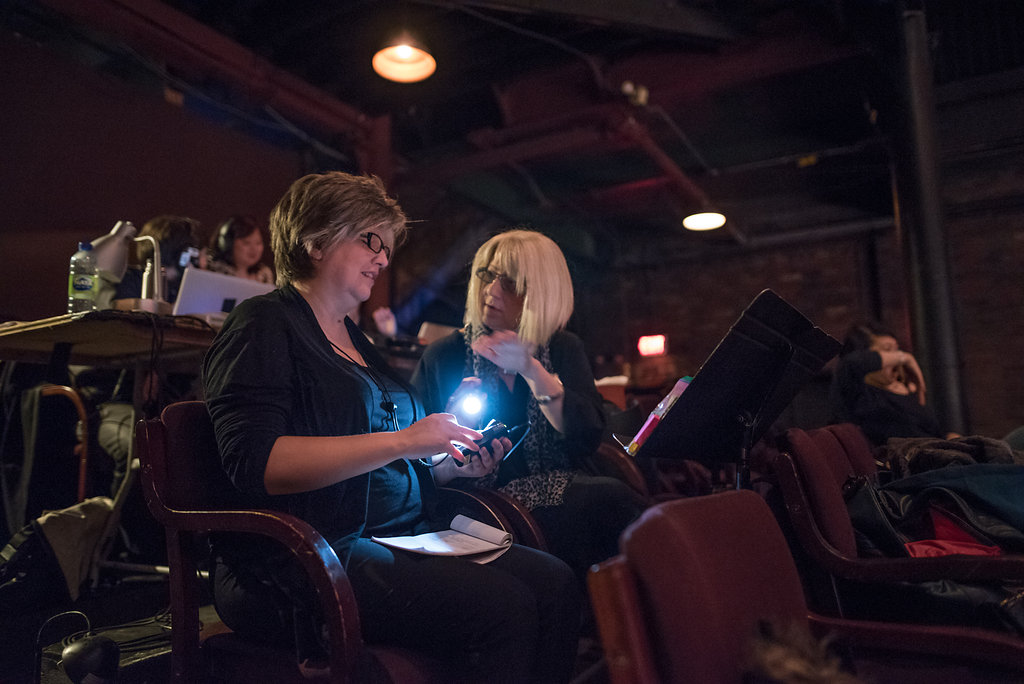The DATT is the culmination of learnings gained through ethnographic research over a one-year period from July 2015 – July 2016 during the development and throughout the production of ULTRASOUND co-produced by Cahoots Theatre and Theatre Passe Muraille.
Ethnographic methodology describes and examines cultural scenes (e.g. communication interactions) as they evolve naturally in the environment within key institutional settings (e.g. schools, museums, theatres, etc.).[1] It paints “a portrait . . . in as thorough, accurate and vivid a manner as possible so that others can truly ‘see’ that [theatre] and its participants and what they do”.[2] Participant observation applied with rigour is key in ethnography. It emphasizes documenting and portraying everyday experiences of individuals by observing and/or interviewing them and relevant others, by taking field notes and/or by videotaping and/or photographing interactions. These tools, which are ongoing in nature capture the processes as well as identify the products. It has the ability to describe “nuances of behavior that might escape researchers using other methodologies . . . [and in so doing] see things that otherwise might not even be anticipated”[3]. These observations and analyses are brought together and triangulated so that our discoveries are corroborated and multi-faceted.
The DATT is the outcome of all of the learnings based on this ethnographic approach. It is the result of research gathered from articles and experience from the Deaf community, a Deaf community leaders and artists forum, a theatre leaders forum, pre-production surveys to Deaf community members, interpreters and theatre leaders, participant observation and field notes from DATT meetings over a ten month period, pre-production discussions, rehearsals and production, video interviews with the cast, creative and management team and post production feedback from audience members, cast and creative team. Observations, video interviews, field notes, photographs and data gathered throughout provide rich findings that could not have come to be without the openness of everyone involved.

Photo Credit: Dahlia Katz
[1] Erikson, F. (1986). Qualitative methods in research on teaching. In M.C. Wittrock (ed.), Handbook of Research on Teaching (third edition). New York: MacMillan.
[2] Fraenkel, J. and Wallen, N. (1993). How to Design and Evaluate Research in Education. New York: McGraw-Hill, Inc. p.393.
[3] Ibid p. 393 -394.

